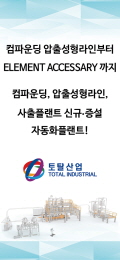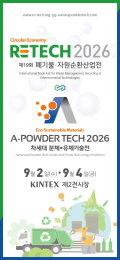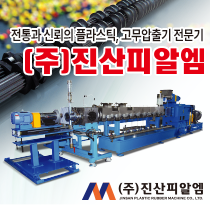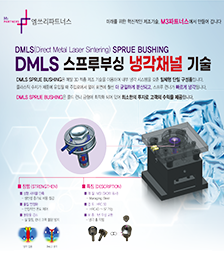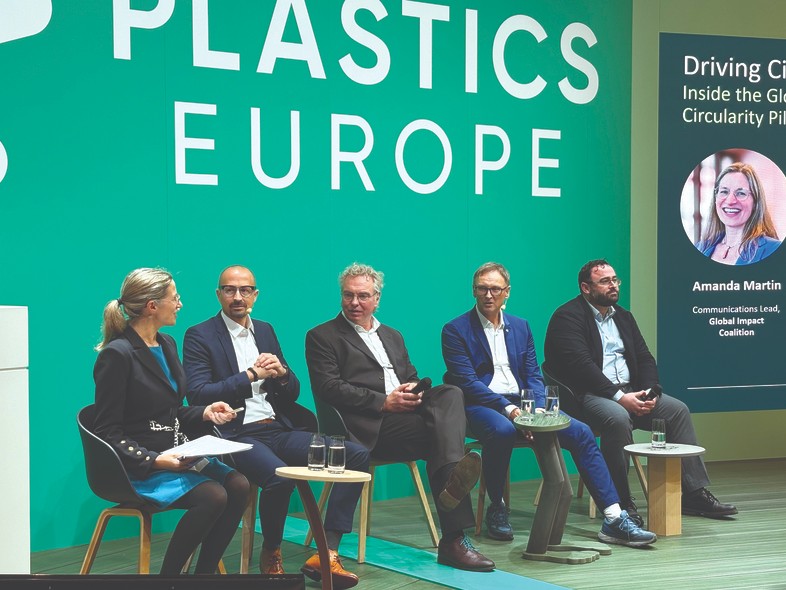Market trends
Resin distributors see success amid challenges of 2018
작성자 : Aeyoung Park
2018-09-03 |
조회 : 4166
Resin distributors see success amid challenges of 2018
North American resin distributors are seeing some good things so far in 2018, even if the market is facing some challenges.
Most distribution executives contacted for this story said that their firms' results were up — in dollars or volume in pounds or both — in the first half of the year.
John Jorgensen III has seen all sides of the distribution market this year at Conventus Polymers LLC, the Parsippany, N.J.-based firm where he's co-owner.
2018 "has been a great year for us," he said. "We've seen high double-digit growth, and most of our end markets are up."
"But it's been a crazy year in terms of supply," Jorgensen added. "Polycarbonate has been tight, and nylon 6/6 is crazy right now. We've never had a case where we couldn't supply a customer, but we do a lot of application development, and in some cases we've had to give a secondary [material] option."
Results are what matter
Market challenges haven't prevented most distribution executives interviewed for this story from reporting solid growth.
"Our business is up, and we have an aggressive growth plan," said Ed Holland, president and CEO of M. Holland Co. in Northbrook, Ill. "We're up double digits in pounds. One of the reasons we're doing well is because we've invested in people, technology, new products and acquisitions. Our new business development group is starting to produce."
Bamberger Polymers of Jericho, N.Y., has seen 12 percent volume growth in pounds, according to Mike Pignataro, North American sales vice president for the company.
"We're seeing slow and steady growth in the U.S. and Canada," he said. "There are a lot of good distributors out there, each with their own niche. We're all focused on what we do best and maintaining that business."
Sales volume is up around 6 percent at Osterman & Co. in Cheshire, Conn., according to Dave Dever, distribution sales vice president. The firm's major focus has been on prime grades of branded resins.
Chase Plastics Services Inc. President Kevin Chase said his Clarkston, Mich.-based firm has seen volume up substantially at rates he described as "high single-digit" and three times that of U.S. GDP growth.
"We're having a really good year," said John Moisson, president of Jamplast Inc. in Ellisville, Mo. "Pricing has been relatively stable, volume is good, and our customers have been doing well."
Earnings results
Among publicly held firms, the distribution unit of Avon Lake, Ohio-based PolyOne Corp. saw first-half sales growth of 11 percent, but it saw operating profit for the quarter decline by 5 percent.
"We had a strong first-half revenue gain due to growth in several key markets," PolyOne Distribution President Scott Horn said in an email. "However, our bottom-line results were impacted by continued investment in commercial resources, higher transportation costs and material price increases.
"Raw material increases are driven by cyclical market dynamics, but we expect higher transportation costs to continue for the foreseeable future," he added.
At Nexeo Solutions of The Woodlands, Texas, plastic distribution sales were up 8 percent for the quarter ended March 31, while gross profit increased 3 percent. Officials credited higher selling prices for the sales boost, as the firm's plastics sales volume in pounds was down 4 percent for the quarter.
"Our general theme is that we're seeing growth in line with GDP as we focus on investments and speed and customer intimacy," said Shawn Williams, senior plastics vice president..
Err ... supply?
| ▲ Kevin Chase |
Uncertain supplies of resins have led to some anxious moments for distributors in the first half.
"A lot of materials are tight," Kevin Chase said. "We're seeing it in nylon 6/6 and polycarbonate and acetal. We're not seeing allocations, but tightness.
"Demand is up, but no [resin maker] has added capacity since before the recession," he added. "Their [return on investment] is just starting to get there."
When material supplies get tight, Chase said his firm "tries to work in the framework of our existing suppliers, but in some cases we have to satisfy customers and look to other options."
On the commodity side, the polypropylene market also has been tight.
"We can sell a lot more of it if we could get it," Ed Holland said. "It's still a challenge. We don't see any relief in polypropylene until 2020 or 2021."
"Customers look to us to solve their problems, but there have been times this year when it's been tough to be a distributor," added Grant John, president and CEO of PolySource LLC in Independence, Mo. "The situation in nylon 6/6 has been challenging. Not all applications can go to other materials."
Moisson at Jamplast agreed that availability of nylon 6/6 has been limited, and that although ABS has been available, "there's not tons of it floating around." Even some supplies of material imported from Asia have been snug, he added.
Marking the markets
Among end markets and resin categories, Moisson said that Jamplast's sales of bio-based products are 20 percent ahead of last year's pace and that it's also seen growth in 3D printing and blends and alloys. On the bioplastics side, Jamplast has worked with bioresin maker NatureWorks for more than 15 years.
At Bamberger, Pignataro cited industrial blow molding as "a big area for us" and added that PE stretch film is also doing well. Many of Bamberger's customers have new capacity "up and running with more to come" in 2018.
Ed Holland said no single market has stood out for his firm this year but that it's seen growth in several of its main end markets, including flexible packaging, rotational molding and automotive.
Kevin Chase added that all areas have been strong for his firm, including automotive lightweighting. "Car builds are down, but companies are doing a better job of metal-to-plastic conversion," he said.
At Conventus, Jorgensen said that his firm's sales were up in oil and gas, building and construction, health care and electrical. He added that Conventus was doing more work with engineering resins and high-performance materials such as polysulfone, polyphenylsulfone and polyetheretherketone in areas of metal replacement.
High density polyethylene has provided growth at Osterman, according to Dever, with higher sales in caps and closures, consumer products and food packaging.
General Polymers Thermoplastic Materials LLC of Clarkston, Mich., has been strong in automotive, industrial and appliance so far in 2018, CEO Greg Boston said.
Health care, transportation and outdoor high-performance markets have led the way for PolyOne because of investments the firm has made in those areas, Horn said. In terms of materials, PolyOne is seeing good growth across both engineering and commodity portfolios with slightly stronger demand for olefinics, he added.
Williams at Nexeo cited health care, general industrial, sports and leisure, building and construction and electronics as areas of strength in the first half. Potential new products for his firm include compounds and materials for wire and cable.
Impact of taxes, tariffs
| ▲ Ed Holland |
Although many distribution execs said it was too soon to measure the full impact of changes in U.S. tax policy and of potential tariffs on imported goods, they already were seeing effects in some areas.
"The tax change should be generally positive for most manufacturers," said John at PolySource. "Tariffs had been more manageable and more expected, but now we might see some surprises that lead us to change our strategy."
At General Polymers, Boston said that the tax changes should impact distribution in a positive way because of "overall support for business from the government."
Mike Kirtley, president and chief operating officer for General Polymers, said tariffs could impact companies on the steel side, possibly leading them to look at existing buildings rather than build new ones.
The tax situation is helping Osterman's customers buy new equipment, according to Dever, but he said the new tariffs might lead the firm to do more volume in Central and South America instead of Asia.
Kevin Chase was bullish on the tax cuts, saying they've allowed his firm to double its 401k match to employees and to give raises and bonuses as well.
"Any time you can take money out of the hands of the government and put it into the hands of free enterprise, that's a good thing," Chase said. "We're seeing a Trump bump out there."
M. Holland's customers are also buying new equipment, Ed Holland said, but he added that the tariffs "have multiple issues and none of them are good."
"They've created uncertainty about investing in business," Ed Holland said. "Steel affects auto and supply chains — 20 percent of the cost of a new plant is steel. And our company and many others have worked to set up business with Canada and Mexico."
Changes on the tax side are also helping Jamplast's customers.
"After going through the recession and then being so cautious and conservative, we're finally seeing good optimism and expansion with people buying new machines," Moisson said.
Tariffs might challenge traditional areas but could help Jamplast's sales on the bioplastics side, he added. Moisson said that point was driven home recently when he and his wife were offered paper straws instead of plastic ones at a local restaurant.
Look to the horizon
Most distribution execs expect to see solid results for the rest of 2018. Many firms are addressing the future of the industry, even if they're doing so in different ways.
"I think one of the long-term trends we'll see is big petrochemical firms aligning with big distributors," said Moisson at Jamplast. "Then there will be a second tier [of distributors] aligned with smaller niche-type materials like bio-based resins or elastomers or acrylics to help rep smaller [material] suppliers that don't get attention from larger distributors."
At Bamberger, Pignataro said his firm won't be affected by being recently acquired by Plastiche SA, a Luxembourg firm controlled by the same family that controls materials giant Ravago Group. Ravago's businesses include resin distribution.
"We're still a separate entity with our own sales and management and financing," he said. "There's no intention to change what's worked. We're all excited about the future of industry with the addition of branded distribution partners."
M. Holland might look to add more compounders to its line card, Ed Holland said, and to find ways to benefit from exclusive distribution deals, such as the one it has in the United States for nylon-based materials made by Teknor Apex Co. of Pawtucket, R.I.
He added that consolidation among the customer base has also been a challenge, with several customers now buying directly from resin makers. At the same time, Ed Holland said, M. Holland "always is looking" look to add to its line card through acquisitions or new suppliers.
Conventus plans to "aggressively expand our product line for specialty products with our good value proposition," Jorgensen said. The firm has also added two sales reps in the last year and intends to add one or two more by the end of 2018.
Relationships are also a driver at Osterman.
"This is a relationship business," Dever said. "When my career is over, I want to look back and be proud that we've provided service while being competitive."
He added that Osterman is now working with its seventh sales training class. The firm has hired more than 30 sales reps from its first six classes.
General Polymers recently moved into a new, larger office space and plans to add four or five new sales reps this year, according to Kirtley. The firm has also had its materials approved by several new customers.
PolySource plans to hire two or three more sales reps this year and is looking for new materials to grow its geographic reach.
"We continue to talk to new suppliers to find more materials that fit into our mission," John said.
Nexeo is facing inflationary costs on lumber, pallets, cardboard, steel drums and pails, but it still expects "steady growth" for the rest of the year, according to Williams. The firm plans to build "a more robust online presence" and is providing more access to shipping data and real-time inventory information to its sellers.
The image of plastics remains important to PolyOne, especially in light of recent challenges to single-use plastics and concerns over ocean plastic waste.
"Plastics are extremely valuable materials making important contributions in every industry," PolyOne's Horn said in an email. "Further unlocking that value with more effective, universal recycling and awareness programs will entail collaboration among industry, consumers and infrastructure globally."
Customer relations also remain a big area of focus for Chase and other distributors.
"You have to constantly drive value," Kevin Chase said. "I don't care if you're selling to your sister-in-law. Great companies are good at delivering value services."
Resin distributors see tightness in some materials, but report steady growth.

